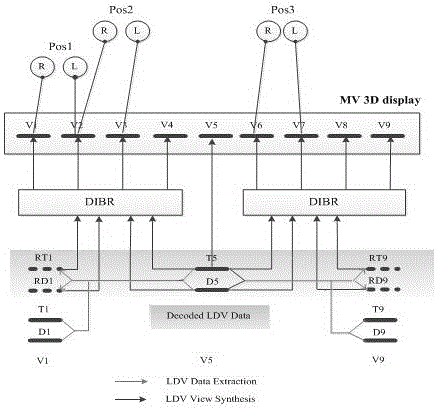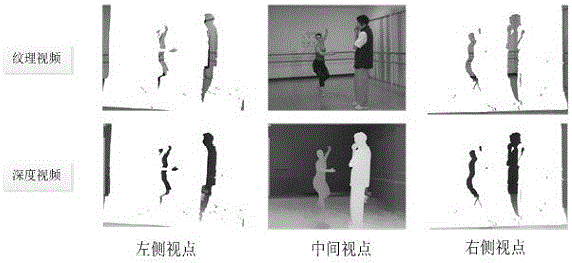HEVC (High Efficiency Video Coding)-based coding method of layered depth video residual layer data
A technology of residual data and encoding method, which is applied in the fields of digital video signal modification, electrical components, image communication, etc., can solve the problems of small amount of residual layer data, scattered residual data, and low performance of encoding, etc. The number of bits, the effect of guaranteed quality
- Summary
- Abstract
- Description
- Claims
- Application Information
AI Technical Summary
Problems solved by technology
Method used
Image
Examples
Embodiment Construction
[0036] Preferred embodiments of the present invention are described in detail as follows in conjunction with accompanying drawings:
[0037] see Image 6 , a method for encoding layered depth video residual layer data based on HEVC, the specific steps are as follows:
[0038] Step 1. Generation of residual data: In the process of generating LDV residual layer data, it is necessary to filter out small holes in the background area whose number of pixels is less than the threshold p, and at the same time, in order to properly expand the Disocclusion area, the pixel width is q for discontinuous depth values The pixels in the background boundary area are calibrated. The thresholds q and p here need to be adjusted so that the cost of encoding residual data is as small as possible, while reducing the appearance of synthetic virtual viewpoint artifacts;
[0039] Step 2. Residual layer block calibration preprocessing: the size range of CU in HEVC is between 64×64 and 8×8, in order to...
PUM
 Login to View More
Login to View More Abstract
Description
Claims
Application Information
 Login to View More
Login to View More - R&D
- Intellectual Property
- Life Sciences
- Materials
- Tech Scout
- Unparalleled Data Quality
- Higher Quality Content
- 60% Fewer Hallucinations
Browse by: Latest US Patents, China's latest patents, Technical Efficacy Thesaurus, Application Domain, Technology Topic, Popular Technical Reports.
© 2025 PatSnap. All rights reserved.Legal|Privacy policy|Modern Slavery Act Transparency Statement|Sitemap|About US| Contact US: help@patsnap.com



